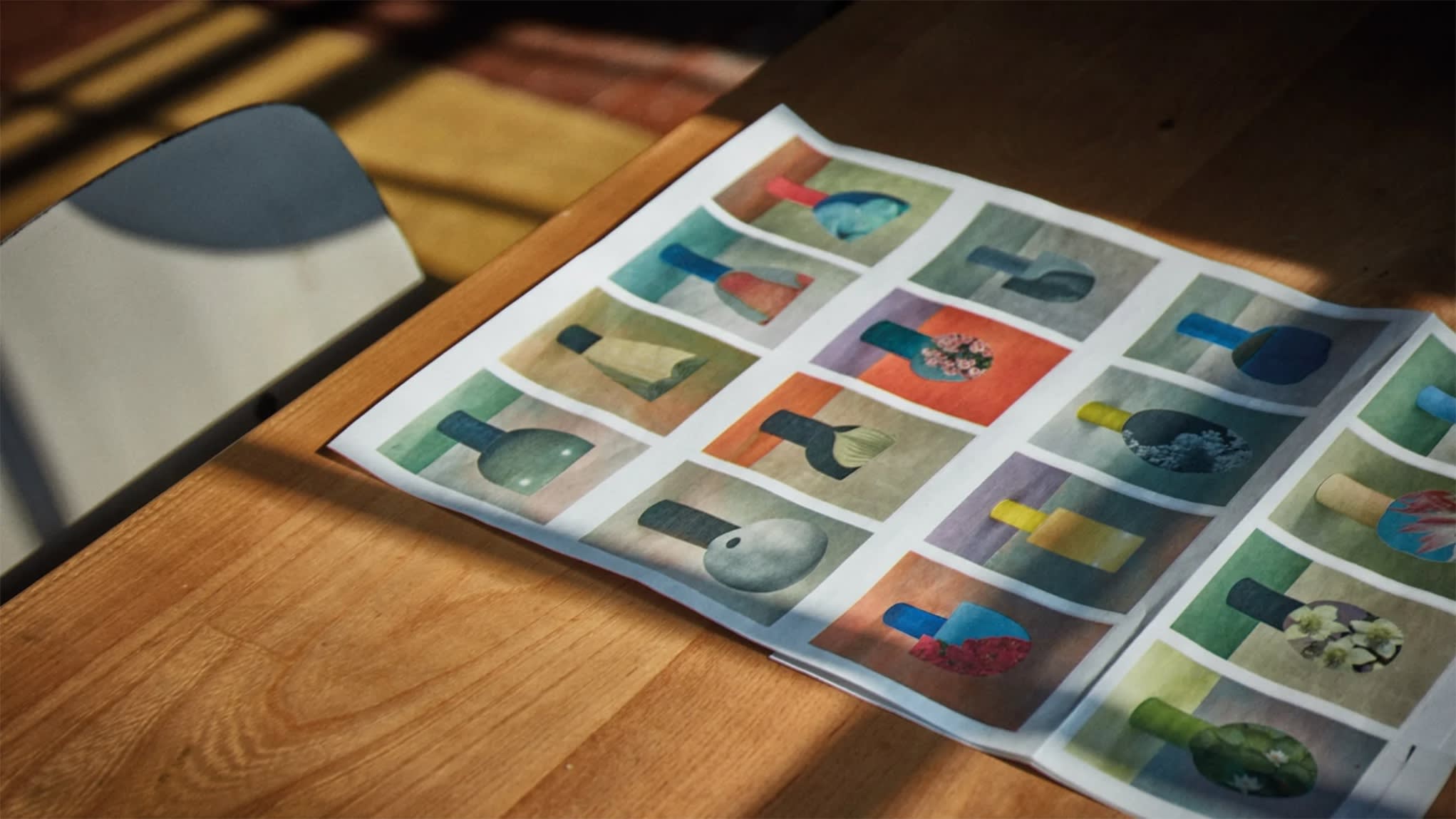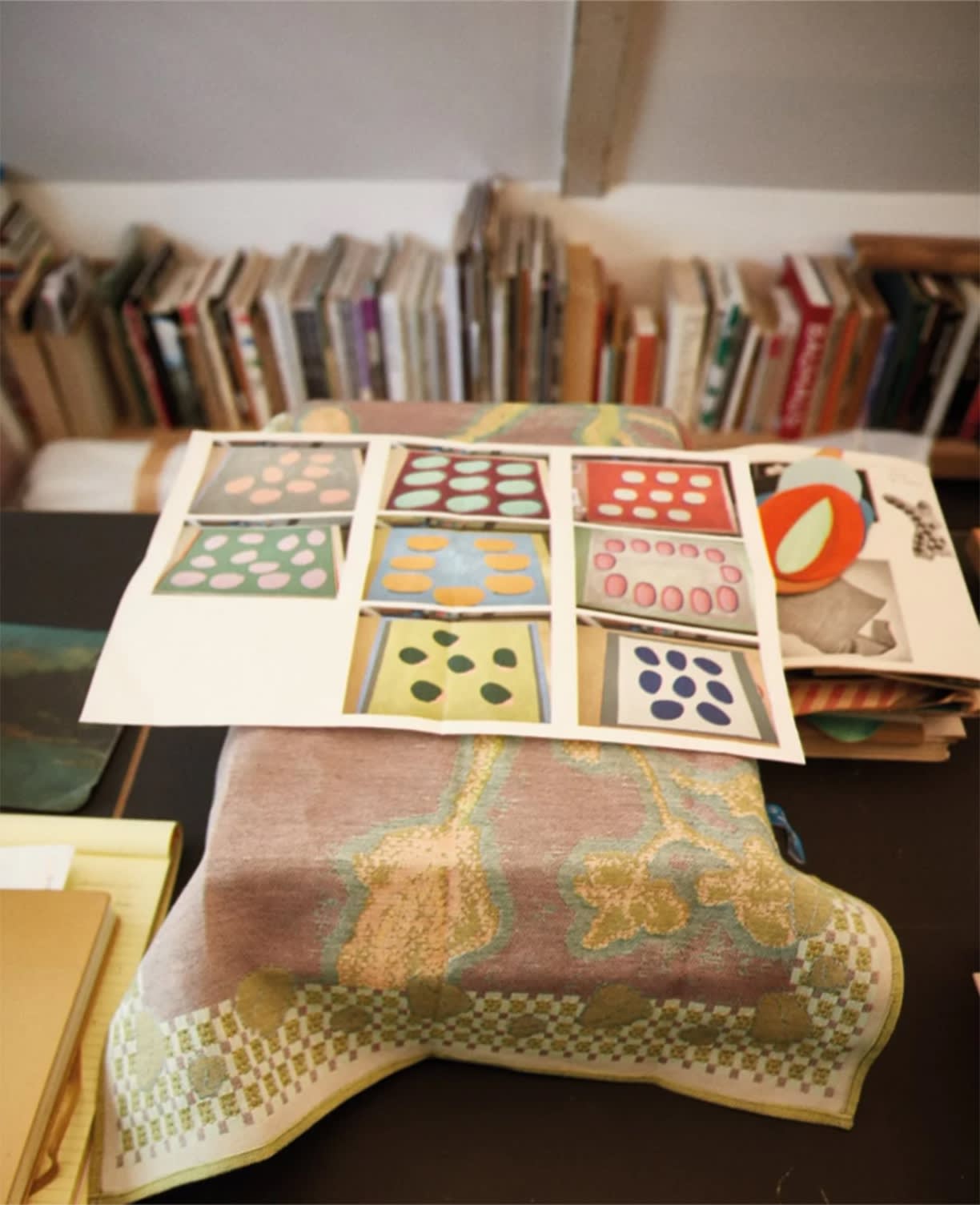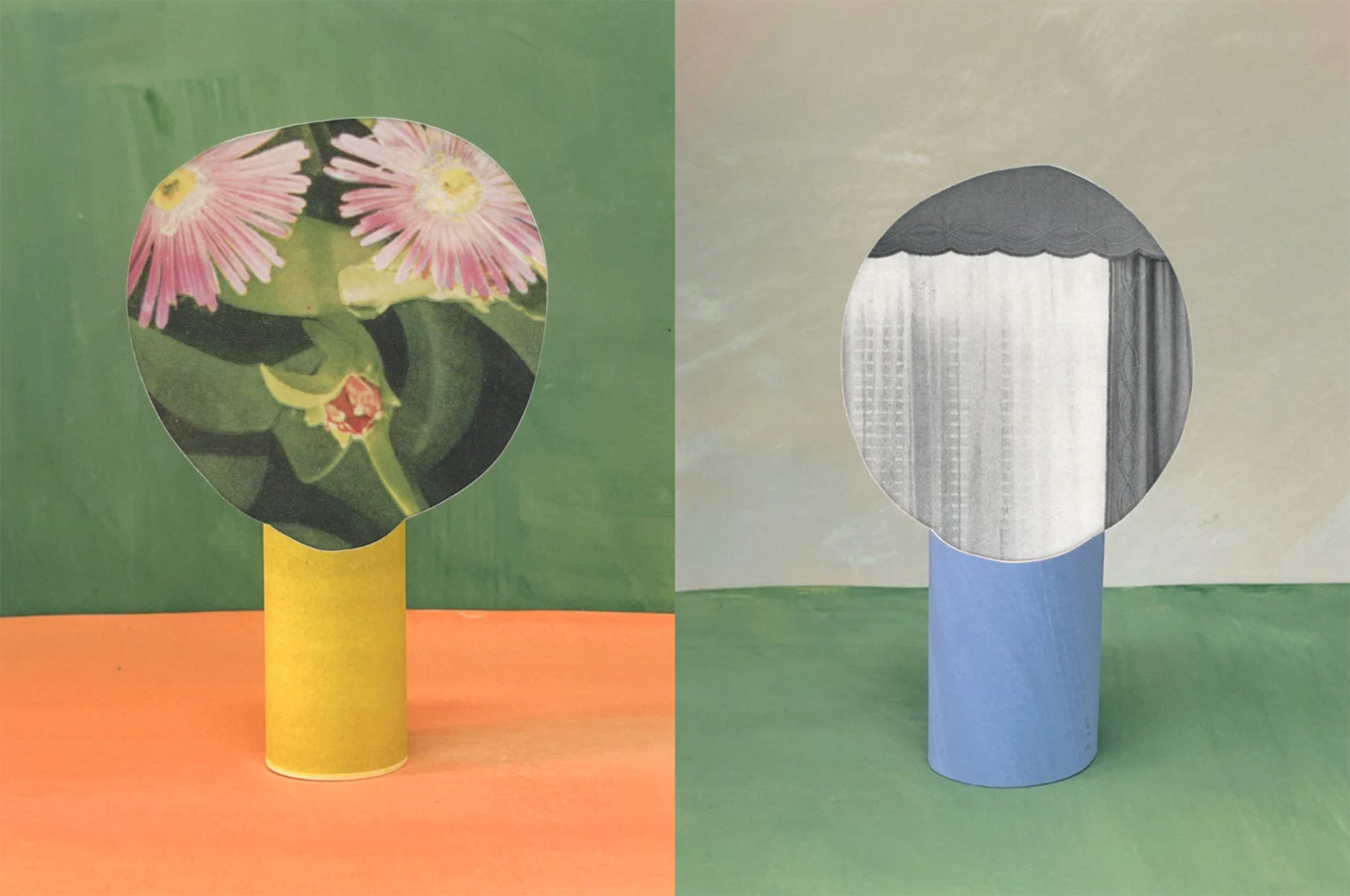Visual communication that conveys the world view of DWM through the works of artists. The third series of artist collaborations was done by Dutch artist Ruth van Beek. Ruth, who creates collage works using old photographs, collects and stocks a huge amount of clippings from magazines and technical books on a daily basis. This time, she created skin-themed artwork for DWM. The space where various photographs and books collected by her Ruth are lined up is an atelier like a collage work, and she responded to the interview with her curious look.

Q: I heard that I've always wanted to make a work with the theme of skin. What kind of skin were you interested in?
A: I think bare skin is like a mirror that reflects the inside of the person. The skin of an uplifting person may be reddish, and the skin of a person with a bloody experience may be deep blue. Also, as there is an expression that the complexion is bad, physical symptoms change the color of the bare skin. If you think that the proof that the person has life is the color of the bare skin, even when you meet someone, you will see each person's different skin seriously.
Q: Undressed bare skin tells a lot about the person's inner side.
A: From ancient times, even if you look at the paintings, you can see that the painter has been enthusiastic about the depiction of the skin. It is the depiction of the skin that makes the person in the still picture look like a bloody person. Also, the skin is important not only for human skin but also for the depiction of fruits. The person who sees the picture can judge whether the fruit is ripe or still blue depending on how the fruit skin is drawn.

Q: The visual art I made for DWM this time seems to be a fragment of some image. What kind of work is it?
A: It will be an art work that collages old photographs. For a long time, I have been collecting cutouts of old magazines and books while paying attention to the texture that is the particle of the photo, but when I look closer, it is shiny, and old photos that are old have stains. As with the skin, you will feel various textures over time.
Q: It's a collage with many motifs that look like a hand mirror.
A: I'm drawn to a hand mirror as an object. A hand mirror is a tool, isn't it? When you look into it, your face is reflected. In other words, it is a tool to take out your face and skin. I was collecting a lot of hand mirrors because of that interest. This time, it was decided that DWM's visual art would be recorded in the form of a booklet from the beginning, so I thought about making a booklet by repeating one motif and making variations. It's like making a number of "faces" like a family portrait using a hand mirror.

Q: Even though it's a portrait, it doesn't show people, it's a strange work.
A: I have cut out a number of old photographs that I have stocked into the silhouette of a hand mirror. If you take a picture of the folds of the curtain through a picture frame called a hand mirror, you can make the curtain look like hair covering your forehead. In some cases, the photo of the mimosa flower cluster is likened to the hair covering the face line, and the photo of the two flower clusters is likened to the eyes of the forehead. In this way, I searched for many "faces" in old photographs through the frame of a hand mirror. The work is a portrait of a face that fits in the shape of a hand mirror, standing in front of a colorful background paper like a photo studio.

You won't feel the color from the DWM bottle design and skin care items. How does Ruth's colorful work connect with the image of DWM, which is as transparent as clear water?
A: I am a natural colorist. In the first place, there is no specific color called skin color, skin color varies from person to person, and I think that the blessings of many plants are condensed into DWM skin care items. Isn't the image of the work and DWM connected in that respect?
Q: Certainly cosmetic foundations come in over 50 colors. What was your impression of DWM?
The design of the bottle is simple, but when you open the cap and apply it to your skin, you will be intoxicated by the complexity of the scent. I really like the understated scent, which is so rich in nature that it is not intrusive, but it is not intrusive, and I love it. I can't get it in Europe so far, so I'm worried about what to do if I finish using it (laughs).


Ruth van beek is an artist based in the northern part of the Netherlands, Koog aan de Zaan. Stock clippings from magazines and books from the 1950s and 70s, and reconstruct photos with their unexpected arrangements. His eccentric collage works are sometimes based on Japanese kokeshi dolls and ikebana.
https://www.theravestijngallery.com/
http://www.ruthvanbeek.com
https://www.instagram.com/ruth_van_beek/
Photos by Koen Hauser

